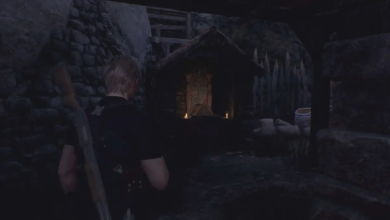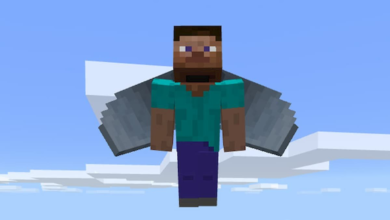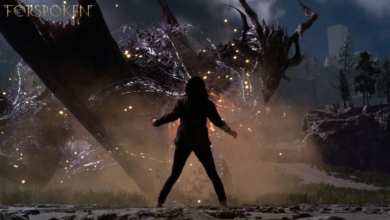
Elden Ring loses a lot of its fun factor towards the end, I must say.
My friend Andrew Thomas sent me that remark via Facebook chat on May 24, 2022. While Andrew had been working on the game casually and sending me his observations along the way, I had crammed the majority of the game into one hectic week in February to review it for launch.
I admired Andrew’s viewpoint on video gaming. We frequently discussed game design because he had produced two games himself: Shillelagh, a surreal take on Devil Daggers, and Roll Control, a motion-controlled maze game. He particularly cherished the Souls series and enjoyed constructively dissecting video games.
I experienced a selfish sense of satisfaction as we spent an hour dissecting the game’s catastrophic shortcomings. As peers praised Elden Ring as a generational masterpiece, my criticism of it made me feel like an outsider. Had I just turned into a sourpuss cynic? I was reassured by Andrew’s shared critique that I hadn’t, and months of inner insecurity vanished in an hour.
One of our last chats was about it. He was killed by an SUV in Brooklyn one week later, on June 1. He’d never complete the Elden Ring.
The abrupt passing of Andrew left a dreadful black stain on the conclusion of a lovely life with boundless possibilities. That last chat concerning Elden Ring hung in the background as I tried to deal with my loss. I wasn’t disappointed that he never got to complete the game; in fact, it could have been better if he hadn’t. But the more I fought for closure, the more I realised how closely Andrew’s life—right up to the very end—mirrored the majesty and tragedy of Elden Ring. That realisation gave me new perspectives on both of the adventures because they are interconnected like the Erdtree, the game’s iconic and ubiquitous tree.
Limgrave
I’m forced to climb a flight of stairs to reach a metal door at the top. I lift it from the bottom with a powerful heave, and it thunks open. My entire universe changes the moment I step over the threshold.
I step into a sea of green and gold as far as the eye can view, leaving behind the drab stone textures that felt like they were closing in on me. My new home, Limgrave, is introduced to me in an on-screen title card.
Elden Ring’s entrance is magnificent because of this point of contrast. A very ordinary open-world start is transformed into a revelation by a claustrophobic buildup. I have emerged from the catacombs and am now perched on the edge of liberty like a 16-year-old with a brand-new driver’s licence and a full tank of gas. Players may experience a momentary loss of grip on the control stick as the beautiful landscape washes over them. It is a paralysing sight. As far as the eye can see, hills roll, and above your head, the Erdtree, a massive golden tree, hangs, making you wonder how much further The Lands Between reaches.
Medfield
I couldn’t tell you when Andrew and I initially met because we’d been friends for so long. I had started telling people that I was in fourth grade at some point because that seemed distant enough in the past for neither of us to double-check our information. I would learn that I had exaggerated the length of our friendship after his passing. His mother remembered his telling her about Giovanni, a cool boy he met, when he came home from kindergarten. Hey, I said I respected his judgement in terms of games, not in terms of people.
We both grew up in Medfield, a small Massachusetts town best known throughout the state for being “not Medford.” Walt Disney, who happened to adore our town, made numerous references to it in some of his studio’s classic films, which is its only creative claim to fame. For instance, it is the location of a renowned 1961 film, The Absent-Minded Professor (at least among Medfield residents, who have few local anecdotes to draw upon).
In the 1990s, when two video game-loving children crossed paths, Andrew and I quickly grew close as two unusual young people living in a bland town. In fact, Andrew was the person who first made me think of game journalism. Andrew wrote a brief article about the brand-new video game The Legend of Zelda: Ocarina of Time for a class newspaper in what I believe to be fourth grade. Even though I had never heard of Zelda, his succinct description impressed me. He described what seemed like a huge, unattainable feat for games in a few short paragraphs. For years after, I wouldn’t even see a snapshot of the game.
Although his mind worked at a pace that I couldn’t understand, Andrew and I mostly bonded over our creative personalities. No matter the medium, we both had a need to create something — anything. Our collaboration on artistic projects began in elementary school when we began using our parents’ camcorders to record skits with an expanding circle of friends. In his most well-known body of work, Andrew puppeteered a vintage Sealab 2020 action figure he dubbed Frank Zappa and had him play out a series of silly slapstick comedy. When I observed him at work, I compared him to a comedic master like Jim Carrey.
My awareness of Andrew’s abilities grew as our world grew. His films developed considerably, switching to live-action projects. I played a man fighting a government assassin with badminton racquets for hands in one of his masterfully choreographed, music video-like battle scenes. His best work, The Dreams, a surrealist anthology movie that attempted to represent the ephemeral and erratic quality of dreams, was produced at the conclusion of high school. One of our friends was shot by Andrew on a portion of his street that was submerged in water, giving the impression that he was walking on water. The plants that surrounded the street had their colors altered by a camera filter, giving them an artificial tinge.
Andrew was quite creative. His early drawings evolved into works of art, his passion for punk rock inspired the creation of our genuinely subversive rock band, Aguasaurus, and his interest in geometric shapes made him an accomplished sculptor. He became more and more compelled to experiment the more he interacted with the environment around him. When there is so much to play with in the world, why limit yourself to just one set of skills? I saw him fill in the surrounding area of Medfield, which was a blank canvas, with every tool he could find.
Temple of Eiglay
I entered the Temple of Eiglay, a church tucked away deep inside the maze-like Volcano Manor, in the middle of my Elden Ring round. I had no idea that it would mark a change in the way I approached the game. I encountered the Godskin Noble, one of Elden Ring’s most heinous adversaries, when I entered its cathedral-like area. A humanoid figure covered in thick layers of flesh that dangle around his enormous body represents the repulsive monster. As he enters the church, he moves slowly down the middle aisle, unintentionally knocking over pews with his loose skin. What follows is a conflict, much like most of the fights in this series.
I fought the Godskin Noble for hours with no success. I just couldn’t get the timing correct to evade his vast arsenal of attacks, thus each death was more frustrating than the last. I could have just stopped playing the game if I wasn’t evaluating it. After 30 hours of riding across The Lands Between and defeating formidable adversaries, I was perplexed as to why I hadn’t advanced. Had I not kept any abilities? The Lands Between didn’t seem like a place of limitless possibility as much as it seemed like a wearying maze of never-ending failure, and I felt just as helpless as I did when I first entered Limgrave.
I examined how I had developed my persona out of desperation. My stat allocations were random, and I had equipped the armour with the highest defence without giving it any thought. The fact that I was still using the same starting lance that my heroine had in her hand when she awoke in that first crypt was the most incriminating, though. It felt like a waste of time to let it go now that I had invested so much time and money upgrading it. Maybe the problems I was having had nothing to do with the game. Perhaps I was simply too afraid to venture outside of my comfort zone and try something new; this was a lesson I needed to absorb from Andrew.
I opened my inventory and began browsing the weapons I’d acquired on my adventures but quickly forgot. For no other reason than its high numbers in comparison to what I was wearing and its distinctive shape, a curved blade drew my attention. I put it on and unleashed my rage on a group of surrounding grunts, using its spinning slash attack to effectively dispatch them. That would work, yes.
My playing style changed immediately. I was cutting circles around adversaries with swift slashes rather than slowly probing them from a distance with my feeble lance. It was like using a different brush to paint when I fought the Godskin Noble. I made a few attempts, picking up the nuances of my new abilities.
All of a sudden, I felt refreshed. Though The Lands Between itself had not altered, my perspective on it had. I made a mistake by considering it to be a conquerable static world. Instead, it was just as much of a creative playground for me as Medfield was when I was a child. All I had to do was see it from Andrew’s perspective.
Bushwick
Most people naturally grow apart from their high school pals when they leave for college. With my Medfield bunch, it was by no means the case. As luck would have it, many of us reunited in Bushwick, a Brooklyn neighbourhood, after moving to New York City after graduation. For a few years, Andrew and I would share a shoddy two-bedroom flat with another friend who slept on a fold-out couch in the living room.
Our lives continued to be intertwined even after I moved out. Andrew instantly suggested I apply for a position as a community manager at a 3D-printing firm he worked for after I was fired from a job I’d held for four years. Soon after, we started working together, continuing our creative partnership on the job.
We were brought closer together by the fact that we had both experienced a career turning point. I had worked in online quality assurance for six years before to getting a position in 3D printing. I was developing a skill that I had no desire to use in the long run, similar to my lancing days in Limgrave. I was aware that Andrew was in a similar situation, but he wouldn’t completely accept that about himself until after he and 15% of the company’s employees were abruptly fired on a Wednesday morning.
I observed Andrew considering how he wanted all of his varied skills to eventually coalesce over the course of the following few years. He was a skilled community builder, a skilled artist with a background in sculpture, and he had started to further explore his passion of video games. Overnight, he was recognised as a game creator after making a Roll Control prototype that allowed players to control a ball with a balance board. What started as a simple experiment quickly became Andrew’s main goal as he set out to create a project that was a reflection of his limitless imagination.
The game industry proved to be a good fit for Andrew’s eclectic blend of interests and skills. He unexpectedly invited me to a Discord server he co-founded to act as a meeting place for the New York City independent game design scene in one of his often surprising moves. When it started to grow into a thriving community with close to 1,000 members, including developers, artists, audio engineers, and even just Andrew’s friends who wanted to see what he was up to, I initially thought it was something he’d forget about in a week.
Projects Andrew started were notorious for being abandoned just before they took on their ultimate shape. I recall him spending months developing and testing a unique board game called Terradice before moving quickly to his next concept after it seemed like he had figured it out. I was always perplexed by something about him; I could never understand why he would devote so much time and energy to an idea only to see it fade away.
Whether on purpose or not, the existence of his Discord channel was evidence that he was beginning to transform. Andrew’s many skills seemed to be reaching their conclusion after decades of intriguing tinkering; I could see him settling on his ultimate design. With his second game, Shillelagh, he was flexing more of his developer muscles and expanding his influence on the local gaming scene. He didn’t precisely sure what he would do after leaving a well-paying job he didn’t like, but he informed me that he had at least made one important choice.
His final message to me was, “I don’t wanna work at more shitty startups,” he wrote.
The Lands Between
Particularly in action games that rely on momentum, satisfying endings may be incredibly challenging to pull off. Late-game moments that should crescendo can instead fall flat due to the requirement for steady escalation, often over extremely long periods of time (such as the odd tower defence set piece in BioShock Infinite).
Andrew discovered a far more basic problem with the open-world genre while examining Elden Ring. He noticed this issue in The Legend of Zelda: Breath of the Wild, and in typical Andrew form, he explained it with a metaphor from high art.
After our last conversation, he wrote, “It’s the abstract expressionism problem of the blank canvas.” The first moves are the largest and boldest; the others are just filler.
The most memorable Elden Ring actions are its biggest ones. the moment you enter Limgrave for the first time. the instant you open a chest and find yourself unexpectedly in the completely foreign world of Caelid. the time you board a lift and learn there is a vast underground universe. The opening moments of Elden Ring feel unlike anything else because of those jaw-dropping scenes.
However, the more paint it applies to the canvas in large strokes, the less room it has to work with later. By the story’s conclusion, it seems as though the authors are adding finishing touches to a nearly finished painting. Although it’s a crucial step in the creative process, Andrew noted that it’s “so much”
I’ve had a simmering animosity towards Elden Ring ever since I played it in February; this resentment was abruptly heightened by a loved one’s passing months after the game’s release. I find myself immediately overcome with sadness when I recall my time with it. Why did this limitless journey have to end with such a harsh, depressing conclusion? What good was it to spend so much time in this world yearning for a resolution to the conflict that would never materialise? My journey through The Lands Between was filled with so many wonderful experiences, yet I was left to try to make out the once-golden Erdtree through the haze that would finally envelop it.
Andrew was always more rational than I was, and he had a funny way of reducing what to some could be an existential crisis to a passing aside. I’m fine with investing 100 hours in a game, he wrote. “It’s been long enough.”
Those 12 phrases initially struck me as trite cynicism, but I now see that they are the key to understanding his entire worldview. The strong actions that Andrew adored, the ones that only appear when you’re painting in the present rather than fretting over how each colour will combine later, filled his existence. He didn’t have to follow through with every mark to appreciate them. That philosophy, when he was still alive, eluded me. Maybe that’s how I wound myself wandering the Temple of Eigley with a beginner’s lance that was +14.
I struggle with closure in my interactions with Andrew and Elden Ring. I keep searching for closure that will neatly end stories that feel ominously unsolved in each of them. I now realise that Andrew gave me that response a week before he went away as I relive our last discussion. Instead of finding serenity in the 100 that do, I keep looking for purpose in the hours that don’t exist. Every recollection of Andrew evokes the feeling of opening the metal door and entering Limgrave for the first time. All of the wonder, happiness, and love pour into the frame like vast expanses of green and gold. Even if I am aware of the destination,











